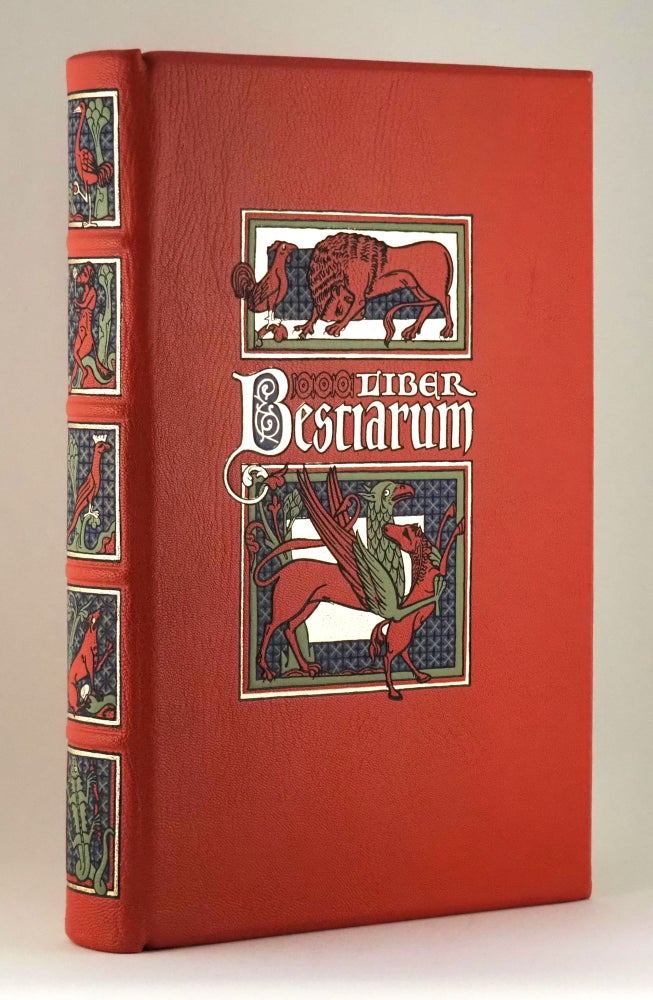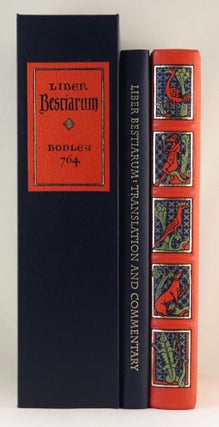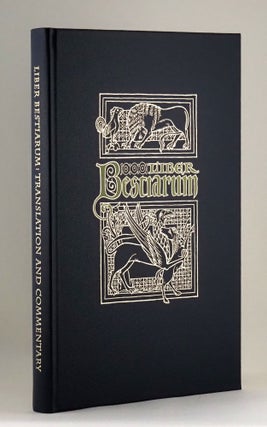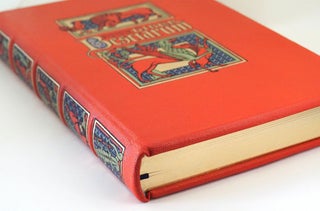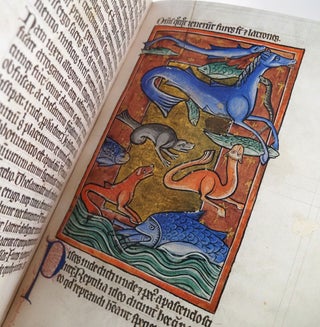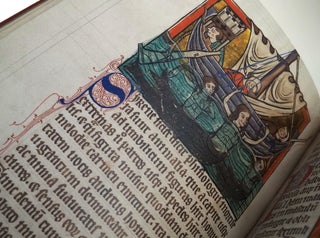Folio Society Facsimile of Liber Bestiarum, or MS Bodley 764
Two volumes: Facsimile of Liber Bestiarum (Vol. I) and Translation and Commentary (Vol. II). Translation by Richard Barber. Commentary by Christopher de Hamel. London: The Folio Society, 2008. 30x19.75cm: Vol. I, 137pp; Vol. II, 173pp. This facsimile edition is limited to 1,980 numbered copies, this being 467.
Vol. I. Liber Bestiarum in full red Nigerian goatskin leather with beveled boards, four raised bands on the spine, and green endpapers. Magnificent decorative lettering and illustrations, taken from the original manuscript, to front board and spine compartments in gilt, black, blue, and light green. Gorgeous binding design by David Eccles that pays tribute to the interior illustrations. Text block edges gilt. Contains a blue ribbon marker. Boards show minimal signs of wear. Fine. Vol. II. Liber Bestiarum: Translation and Commentary bound in blue cloth with gilt illustration and gilt and green lettering to front board. Gilt titling to spine. Same green endpapers as found in Vol. I. Fine. Both volumes are housed in publisher’s original blue cloth clamshell box with black titling on a red leather pastedown with gilt accents. Fine.
Liber Bestiarum or MS Bodley 764, its name and location at the Bodleian Library, is one of the most beautiful, illuminated bestiaries from the mid-13th century with its elegant lettering and striking burnished gold adorned illustrations. It is believed to be the bestiary identified in the first catalogue at Oxford University in 1605, where it remains today some 400 years later. In the commentary, in addition to attempting to decipher the origin and history of the bestiary’s ownership, de Hamel explains that the purpose of bestiaries during the Renaissance period was not actually for natural history purposes, as is often believed, but as another biblical meditation tool for monks and clergy. He points out that each passage and illustration can be used to show the will of God, as well as prophecies of the Bible through the lives of animals. He states, “The important point is not simply that a preacherly raconteur could draw a moral lesson from anecdotes about animals, as in Aesop’s Fables, for example, but that the creatures had been divinely created and endowed with characteristics specifically for that reason” (p.25).
Price: $1,200.00
Item #10056

